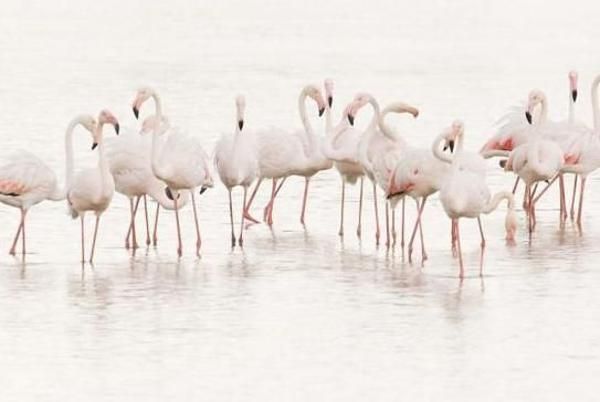Biología
Departamento


Estación Biológica de Doñana
Sevilla, EspañaPublicaciones en colaboración con investigadores/as de Estación Biológica de Doñana (147)
2024
-
Apex predators can structure ecosystems through trophic cascades: Linking the frugivorous behaviour and seed dispersal patterns of mesocarnivores
Functional Ecology, Vol. 38, Núm. 6, pp. 1407-1419
-
Early-season mass-flowering crop cover dilutes wild bee abundance and species richness in temperate regions: A quantitative synthesis
Journal of Applied Ecology, Vol. 61, Núm. 3, pp. 452-464
-
Evidence for antagonistic effects of climate change and exotic pathogens on regeneration of Mediterranean forests
Journal of Ecology, Vol. 112, Núm. 1, pp. 174-188
-
Fast–slow traits predict competition network structure and its response to resources and enemies
Ecology Letters, Vol. 27, Núm. 4
-
Interaction network structure explains species’ temporal persistence in empirical plant–pollinator communities
Nature Ecology and Evolution, Vol. 8, Núm. 3, pp. 423-429
-
Leakage of plastics and other debris from landfills to a highly protected lake by wintering gulls
Waste Management, Vol. 177, pp. 13-23
-
Multilayer diffusion networks as a tool to assess the structure and functioning of fine grain sub-specific plant–pollinator networks
Oikos, Vol. 2024, Núm. 7
-
Multitrophic Higher-Order Interactions Modulate Species Persistence
American Naturalist, Vol. 203, Núm. 4, pp. 458-472
-
Overlooked seed-dispersal modes and underestimated distances
Global Ecology and Biogeography
-
Seminatural areas act as reservoirs of genetic diversity for crop pollinators and natural enemies across Europe
Conservation Science and Practice, Vol. 6, Núm. 5
-
Using a perception matrix to elicit farmers‘ perceptions towards stakeholders in the context of biodiversity-friendly farming
Journal of Rural Studies, Vol. 108
-
Winged resistance: Storks and gulls increase carriage of antibiotic resistance by shifting from paddy fields to landfills
Science of the Total Environment, Vol. 914
2023
-
Biovectoring of plastic by white storks from a landfill to a complex of salt ponds and marshes
Marine Pollution Bulletin, Vol. 197
-
Data and code corresponding to the article "Interaction network structure explains species temporal persistence in empirical plant-pollinator communities"
Data and code corresponding to the article "Interaction network structure explains species temporal persistence in empirical plant-pollinator communities"
-
Data and code corresponding to the article "Interaction network structure explains species temporal persistence in empirical plant-pollinator communities"
Data and code corresponding to the article "Interaction network structure explains species temporal persistence in empirical plant-pollinator communities"
-
Flower visits of cockroaches (Insecta: Blattodea) in the Iberian Peninsula: Are they neglected pollinators?
Journal of Applied Entomology, Vol. 147, Núm. 8, pp. 565-576
-
Frugivore-mediated seed dispersal in fragmented landscapes: Compositional and functional turnover from forest to matrix
Proceedings of the National Academy of Sciences of the United States of America, Vol. 120, Núm. 44
-
Frugivore-mediated seed dispersal in fragmented landscapes: Compositional and functional turnover from forest to matrix
Frugivore-mediated seed dispersal in fragmented landscapes: Compositional and functional turnover from forest to matrix
-
No Evidence of Deliberate Egg Soiling in the Pied Avocet Recurvirostra avosetta to Improve Camouflage
Ardeola, Vol. 70, Núm. 2, pp. 169-184
-
Non-random interactions within and across guilds shape the potential to coexist in multi-trophic ecological communities
Ecology Letters, Vol. 26, Núm. 6, pp. 831-842